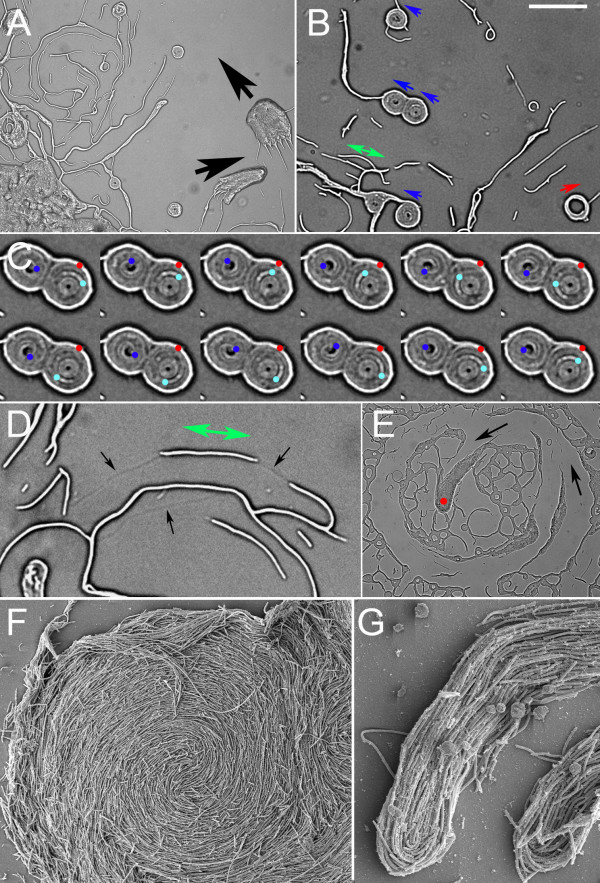Figure 9.
Effect of MitC on cell morphology and swarming on high percentage agars. Stills from movies made by transmission light microscopy. A. Masses of cells moving in the direction of the black arrows and trailing elongated cells. Small circular foci are rotating (next panels). B. Cells grown as in A. Highly coiled rotating bodies of 1–10 cells are marked with the direction of rotation indicated by an arrow. A double-headed arrow indicates that the elongated cell below it was displaying bidirectional motility, shunting slowly (< 5 μm/min) backwards and forwards. Single headed blue and red arrows indicate anticlockwise and clockwise rotation, respectively. Single headed red arrow is clockwise. C. Detail of (B) showing rotation in detail (every third frame shown, frames 1 to 18 in top row, 21 to 36 in bottom row reading from left to right) with a rotation rate of once every 3–4 s. Three positions are marked on specific cells. The red dot is a fixed point on an outer (non-rotating) cell whilst the dark and light blue spots track the rotation of two cells in the adjacent foci. All cells in this section are rotating except for the outer layer. D. Elongated cell (below the green arrows) displaying slow reversible motion down apparent tracks or imperfections in the agar surface (black arrows). E. Movement of masses of cells (red dot) through more scattered cells with the most recent track indicated by arrows. F. SEM of colony on 1.5% MH agar with 0.3 μg/ml MitC showing that the vortex pattern of cells is maintained despite elongation (compare Fig. 3). G. Tips of extending bodies similar to that viewed by light microscopy in panels (A) and (E). Scale bar in panel (B) indicates; 60 μm when applied to panel (A), 60 μm for (B), 20 μm for (C), 100 μm for (E), 30 μm for (F) and 20 μm for (G).

